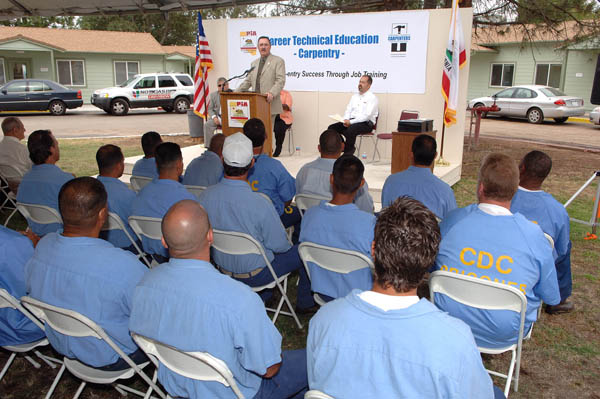Education and Justice Departments Announce New Research Showing Prison Education Reduces Recidivism, Saves Money, Improves Employment
Contact:
Press Office, (202) 401-1576, press@ed.gov

Attorney General Eric Holder and Secretary of Education Arne Duncan today announced research findings showing that, on average, inmates who participated in correctional education programs had 43 percent lower odds of returning to prison than inmates who did not. Each year approximately 700,000 individuals leave federal and state prisons; about half of them will be reincarcerated within three years. The research, funded by the Justice Department's Bureau of Justice Assistance, was released today by the RAND Corporation.
"These findings reinforce the need to become smarter on crime by expanding proven strategies for keeping our communities safe, and ensuring that those who have paid their debts to society have the chance to become productive citizens," said Attorney General Holder. "We have an opportunity and an obligation to use smart methods – and advance innovative new programs – that can improve public safety while reducing costs. As it stands, too many individuals and communities are harmed, rather than helped, by a criminal justice system that does not serve the American people as well as it should. This important research is part of our broader effort to change that."
The findings, from the largest-ever analysis of correctional educational studies, indicate that prison education programs are cost effective. According to the research, a one dollar investment in prison education translates into reducing incarceration costs by four to five dollars during the first three years after release, when those leaving prison are most likely to return.
"Correctional education programs provide incarcerated individuals with the skills and knowledge essential to their futures," said Secretary of Education Duncan. "Investing in these education programs helps released prisoners get back on their feet—and stay on their feet—when they return to communities across the country."
With funding from The Second Chance Act (P.L. 110-199) of 2007, the RAND Corporation’s analysis of correctional education research found that employment after release was 13 percent higher among prisoners who participated in either academic or vocational education programs than among those who did not. Those who participated in vocational training were 28 percent more likely to be employed after release from prison than those who did not receive such training.
The report is a collaborative effort of the Departments of Justice and Education, two of 20 federal agencies that make up the federal interagency Reentry Council. The Reentry Council’s members are working to make communities safer by reducing recidivism and victimization; assisting those who return from prison and jail in becoming contributing members of their communities; and saving taxpayer dollars by lowering the direct and collateral costs of incarceration. Attorney General Holder chairs the Reentry Council which he established in January 2011.
To view the research, please visit: www.bja.gov/Publications/RAND_Correctional-Education-Meta-Analysis.pdf.
For more information about the federal interagency Reentry Council, please visit:http://csgjusticecenter.org/nrrc/projects/firc/.
